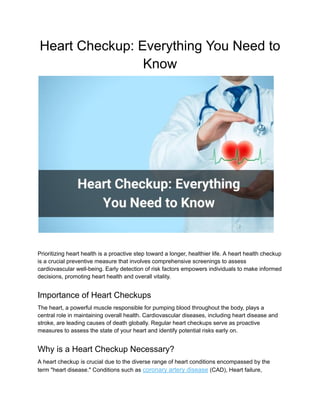What if a seemingly benign condition could escalate into a life-threatening situation? Cardiac tumours, though rare, pose significant health risks even when they are non-cancerous. These growths can disrupt the heart's functionality by obstructing blood flow or affecting its structural integrity. While malignant cardiac tumours are exceptionally uncommon, benign ones still require vigilant monitoring and medical intervention when necessary. Understanding these conditions is crucial for timely diagnosis and treatment.
A case involving a woman in her 50s highlights the complexities associated with cardiac masses. She presented symptoms such as exertional fatigue, tightness of breath, and palpitations that persisted for four months. Upon examination, an echocardiography revealed a large solid mass within the pericardium compressing the right ventricular outflow tract. Subsequent cardiac magnetic resonance (CMR) imaging confirmed the presence of a massive tumour measuring approximately 8.6 cm × 8.5 cm, which was significantly compressing the right atrium while maintaining a smooth border. Such findings underscore the importance of advanced imaging techniques in diagnosing and managing cardiac masses.
| Patient Information | Details |
|---|---|
| Name | Anonymized for privacy |
| Age | 50s |
| Gender | Female |
| Symptoms | Exertional fatigue, tightness of breath, palpitations |
| Duration of Symptoms | 4 months |
| Diagnosis | Giant cardiac mass occupying pericardium |
| Imaging Techniques Used | Echocardiography, Cardiac Magnetic Resonance Imaging |
| Treatment Reference | British Heart Foundation |
Diagnostic tools play a pivotal role in identifying and characterizing cardiac masses. Echocardiograms provide detailed images of the heart's structure, enabling physicians to assess its size, muscle function, and valve performance. Electrocardiograms (ECGs), on the other hand, measure the electrical activity of the heart, offering insights into potential abnormalities such as enlarged waves indicative of cardiomegaly. Both methods complement each other, ensuring comprehensive evaluations of suspected cardiac conditions.
Cardiomegaly, often referred to as an enlarged heart, represents not a standalone disease but rather a symptom of underlying issues. This condition may result from various factors including hypertension, valvular disorders, or genetic predispositions leading to either hypertrophic cardiomyopathy or dilated cardiomyopathy. Despite being transient in some cases, cardiomegaly frequently necessitates ongoing management due to its association with impaired cardiac function. Early detection through imaging studies like echocardiograms proves vital in mitigating long-term complications.
In addition to traditional diagnostic approaches, cardiovascular imaging plays a critical role in differentiating between various types of cardiac masses. Space-occupying lesions discovered during routine examinations or symptomatic investigations demand precise categorization to guide appropriate therapeutic strategies. For instance, distinguishing between thrombi, vegetations, calcific lesions, and true neoplasms requires sophisticated imaging modalities capable of capturing intricate details about lesion morphology and behavior. Advances in technology continue enhancing our ability to accurately diagnose and treat these challenging cases.
Clinical presentations vary widely among patients presenting with cardiac masses. Some individuals remain asymptomatic until incidental findings arise during unrelated procedures, whereas others experience debilitating symptoms requiring immediate attention. Regardless of presentation, thorough evaluation remains essential to determine optimal management plans tailored to individual needs. Collaboration between cardiologists, radiologists, surgeons, and other specialists ensures multidisciplinary care aimed at achieving the best possible outcomes for affected patients.
The differential diagnosis process involves considering multiple possibilities based on available clinical data, imaging results, and laboratory findings. Each step contributes valuable information toward narrowing down probable causes and formulating effective interventions. In certain instances, biopsy samples may be required to confirm specific diagnoses, particularly when malignancy cannot be ruled out initially. However, given the delicate nature of cardiac tissues, invasive procedures must always weigh risks against benefits carefully.
Management strategies for cardiac masses depend heavily upon their classification and impact on overall cardiac health. Benign tumours might only require periodic monitoring if they do not interfere significantly with heart function. Conversely, those causing obstruction or compromising structural integrity warrant surgical removal or other interventional techniques. Malignant entities typically involve more aggressive treatments involving chemotherapy, radiation therapy, or targeted therapies depending on histological characteristics.
Education serves as another cornerstone in addressing cardiac mass-related concerns. Raising awareness about early warning signs encourages timely healthcare seeking behaviors among at-risk populations. Furthermore, fostering collaboration between primary care providers and specialized teams facilitates seamless transitions throughout the diagnostic and treatment continuum. By promoting knowledge exchange and evidence-based practices, we enhance our collective capacity to confront challenges posed by cardiac masses effectively.
As research progresses, new insights emerge regarding pathophysiological mechanisms driving cardiac mass development and progression. Genetic profiling, molecular markers, and biomarker discovery hold promise for refining prognostication models and personalizing treatment protocols further. Continued investment in scientific exploration will undoubtedly yield breakthroughs benefiting countless lives touched by this complex medical issue.
In summary, understanding cardiac masses demands integration of diverse disciplines encompassing cardiology, radiology, pathology, and beyond. Leveraging cutting-edge technologies alongside time-tested methodologies empowers clinicians to deliver high-quality care aligned with patient preferences and goals. Through persistent dedication and innovation, we strive towards reducing morbidity and mortality rates attributable to these enigmatic yet manageable conditions.



